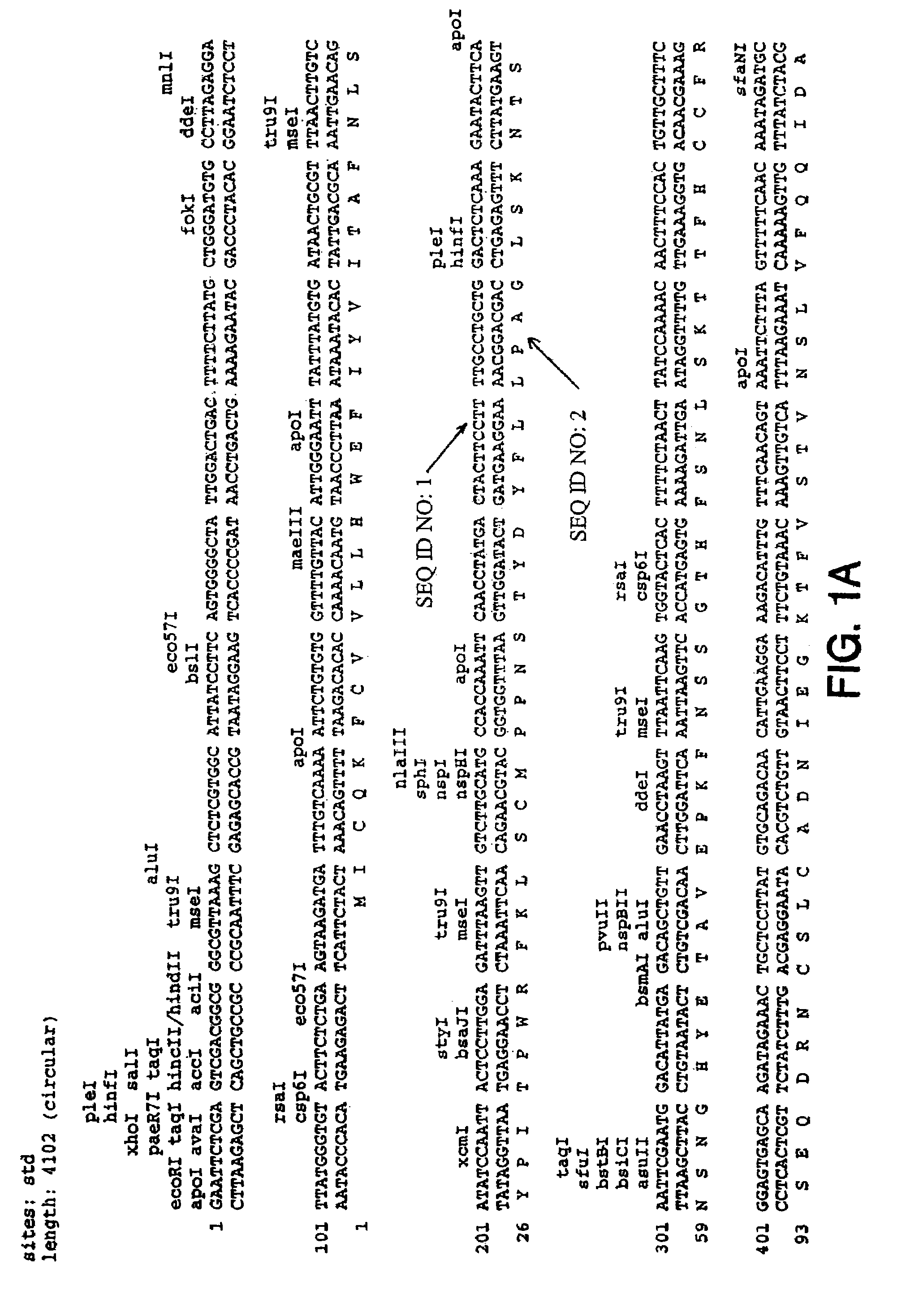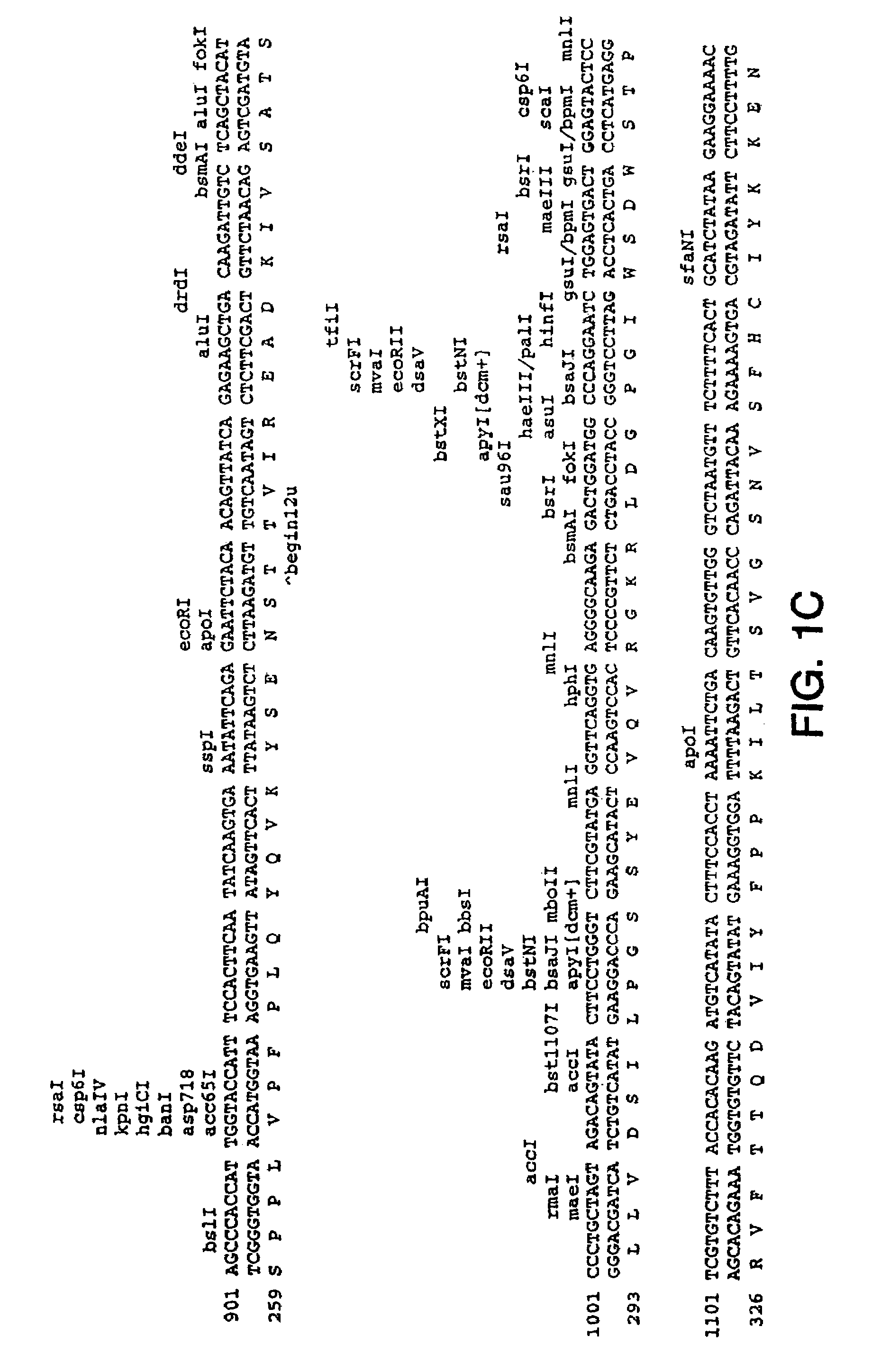WSX receptor agonist antibodies
a technology of agonists and receptors, applied in the field of wsx receptors and ligands, can solve the problems of reducing the lineage restriction of these receptors and hampered biochemical characterization
- Summary
- Abstract
- Description
- Claims
- Application Information
AI Technical Summary
Benefits of technology
Problems solved by technology
Method used
Image
Examples
example 1
[0394]An oligonucleotide probe designated WSX.6 #1 was synthesized based upon the T73849 EST sequence. The WSX.6 #1 probe was a 51mer having the following sequence:
[0395]
(SEQ ID NO:45)5′GTCAGTCTCCCAGTTCCAGACTTGTGTGCAGTCTATGCTGTTCAGGTGCGC-3′.
[0396]The radiolabeled WSX.6 #1 probe was used to probe 1.2×106 clones from a random and oligo dT primed λgt10 fetal liver library (Clontech, Palo Alto, Calif.). Following hybridization at 42° C. overnight, the filters were washed at 50° C. in 0.5×SSC and 0.1% NaDodSO4 (SDS). From the initial screen, 10 clones were selected and upon subsequent screening 5 individual plaque pure clones were isolated. Of these 5 individual clones, four clones designated 1, 5, 6 and 9 were subcloned into pBSSK− (Stratagene) following EcoRI digestion. Sequence analysis revealed clone 5 and clone 9 contained the putative initiation methionine and signal peptide. Clone 6 (designated 6.4) contained the most 3′ end sequence and subsequently w...
example 2
WSX Receptor Immunoadhesin
[0400]Using polymerase chain amplification, a WSX receptor immunoadhesin was created by engineering an in-frame fusion of the WSX receptor gene extracellular domain (WSX.ECD) with human CH2CH3(Fc)IgG (Bennett et al., J. Biol. Chem. 266(34):23060-23067 (1991)) at the C terminus of the ECD and cloned into pBSSK− (Stratagene). For expression, the WSX-Fc was excised with ClaI and BstEII and ligated into the pRK5.HuIF.grbhIgG Genenase I vector (Beck et al., Molecular Immunology 31(17): 1335-1344 (1994)), to create the plasmid pRK5.WSX-IgG Genenase I. This plasmid was transiently transfected into 293 cells using standard calcium phosphate transfection techniques. The transfected cells were cultured at 37° C. in 5% CO2 in DMEM F12 50:50 supplemented with 10% FBS, 100 mM HEPES (pH 7.2) and 1 mM glutamine. The WSX receptor immunoadhesin was purified using a ProSepA™ protein A column.
example 3
Antibody Production
[0401]In order to raise antibodies against the WSX receptor, the WSX receptor immunoadhesin of Example 2 was used to inoculate rabbits to raise polyclonal antibodies and mice to raise monoclonal antibodies using conventional technology.
PUM
| Property | Measurement | Unit |
|---|---|---|
| time | aaaaa | aaaaa |
| pH | aaaaa | aaaaa |
| concentrations | aaaaa | aaaaa |
Abstract
Description
Claims
Application Information
 Login to View More
Login to View More - R&D
- Intellectual Property
- Life Sciences
- Materials
- Tech Scout
- Unparalleled Data Quality
- Higher Quality Content
- 60% Fewer Hallucinations
Browse by: Latest US Patents, China's latest patents, Technical Efficacy Thesaurus, Application Domain, Technology Topic, Popular Technical Reports.
© 2025 PatSnap. All rights reserved.Legal|Privacy policy|Modern Slavery Act Transparency Statement|Sitemap|About US| Contact US: help@patsnap.com



